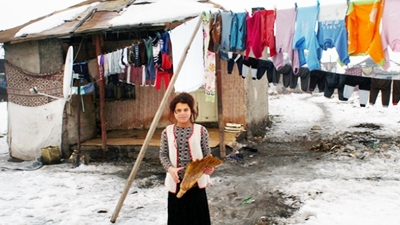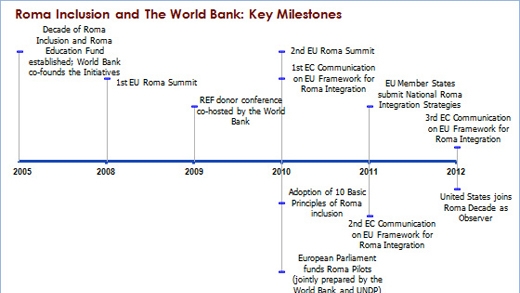Main Points
- Progress has been made on Roma inclusion in the last decade, but much more needs to be done.
- Roma inclusion is a human rights issue, and an economic one.
- The Bank Group has been supporting the European Roma Inclusion Agenda since 2005 and is particularly appreciated for its analytical rigor and poverty analysis.
The dark-haired girl looking confidently into the lens can't be much older than six or seven. She stares intently at the camera, her face full of both hope and determination. In this she is no different than other European children, yet the uncollected garbage and shacks in the background highlight that she faces no ordinary challenges in living up to her dreams and aspirations.
The girl is Roma and lives in a segregated Roma community in Slovakia. She is much more likely to live in poverty than a non-Roma girl of her age.
Indeed, most Roma households (87 percent) are in poverty, and one third goes hungry at least once a month. She has an 18 percent chance of being enrolled in preschool, compared to 72 percent of the general population. Between 12 and upwards of 15 percent of Roma children are streamed into special schools and classes for children with mental disabilities. Odds of graduating secondary school are 9 percent.
And she is unlikely to find self-sustaining work: only 9 percent of women and 20 percent of men living in settlements work, and even then they often earn less than half of what their non-Roma peers earn. The situation is not much better for Roma in neighboring countries.
At the root of these unequal outcomes lies a complex combination of an unfair playing field from birth, a self-reinforcing cycle of unequal opportunities, open discrimination that Roma have faced for generations, and stifled aspirations.
Addressing these deep inequalities for the 10-12 million Roma is a key human rights issue but also smart economics at the heart of Europe's 2020 strategy for Smart and Inclusive Growth. With populations in Eastern Europe aging fast, up to 10-20 percent of new labor market entrants in these countries are young Roma.
As a result of persistent inequalities, their productivity is low, on par with the world's poorest 25 percent of countries. With pension and health expenditures rising quickly, reversing this trend is one of Europe's greatest development challenges.


